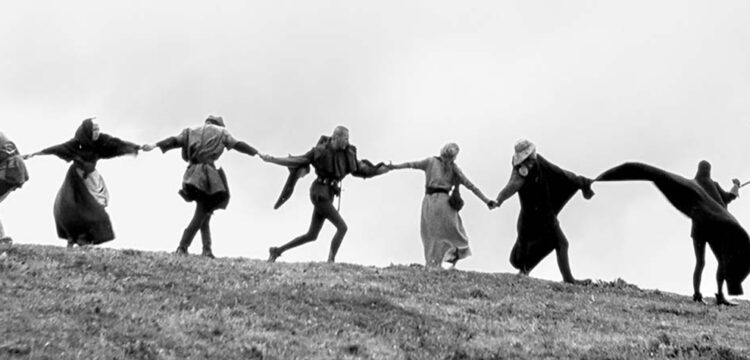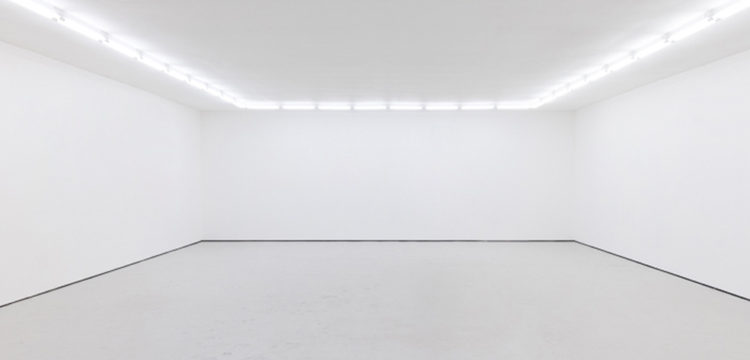Notes on the Apocalypse
Jorge Peris at Magazzino, Rome
Jorge Peris’ third show at Magazzino in Rome is the most classic in his career, refining the artist’s formal obsessions and sculptural techniques. Yet it is still on the same trajectory started many years ago with his solo presentation in New York city at Newman Popiashvili Gallery (2008), when he addressed the emerging global incubus of climate catastrophe and—with one of his wildest installations—he transformed the gallery space in a metropolitan shipwreck.
More than a decade has passed since New York’s show, and L’Innominabile, confuso alla Porta dei Leoni is now staged in a profoundly different environment: Rome’s milieu. When trying to contextualize work in a city like Rome though, it is almost inevitable to fall into well known clichés. Since the neorealist era, filmmakers have depicted Rome’s chaotic beauty, and its terrible traffic jam—product of a culture of congestion that seems to originate long before the foundation of the modern city (Rem Koolhas, Delirious New York, 1978). Notably, rivers of pedestrians, motorbikes, and polluting cars flow around shadowy holes in the ground where red brick walls create no inside space, and marble columns hold no roof. Congestion is often a formula for peaking-area-value through forcing permanence and thus economic transactions. But ironically at the center of this clogging—in Rome, you find empty architectural shells, monuments’ leftovers, and ruins of buildings that have lost their use and so, most own their original capacity to produce value. Like for its perhaps too many car drivers, Rome’s culture can be seen as movement around, and a contemplation of, the remains of a culture of capitalization.
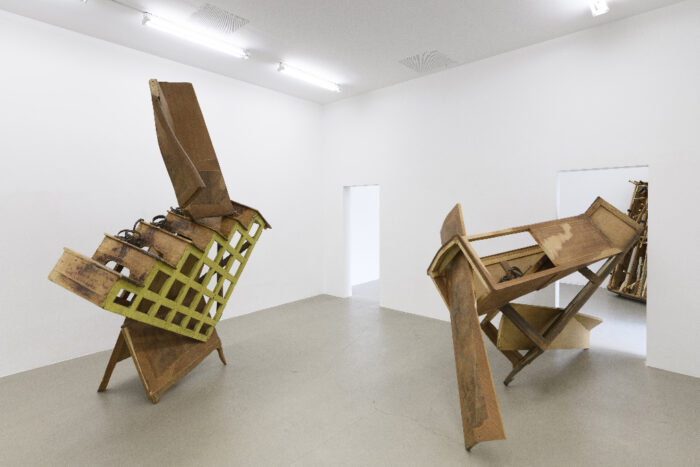
Similarly, the new works of Jorge Peris—who lived in Rome for many of his formative years—presented at his recent solo show at Magazzino Gallery, seems to be a meditation on the inevitability of the process of apocalypse, that at the borders of our culture of infinite progress, is eroding our present.
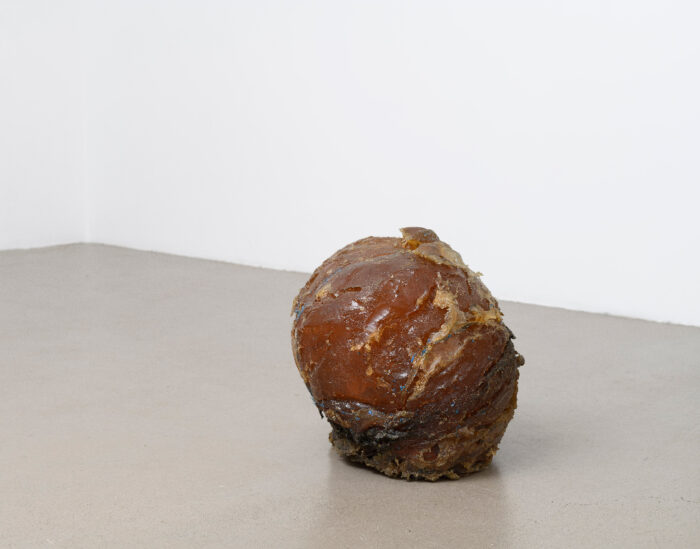
In keeping with this attention to the latter, these notes will start from the last room, where Peris presents Stoccafisso 1 and 2: rests of dry fish skin laying on paper creating two dense and smelly collages/watercolors. In the same room, and in a similar fashion, we find Miele, an orange ball-like translucent accumulation of resins leftovers of some—unknown—industrial process. The title of the piece underlines its ambivalence, attractive and repulsive at the same time. With his artistic gestures, Peris seems to be interested in doing something unusual and yet very specific. Instead of picking up a material and creating an object, he seems to do the opposite, take objects and dismantle them back towards the state of their original raw material.
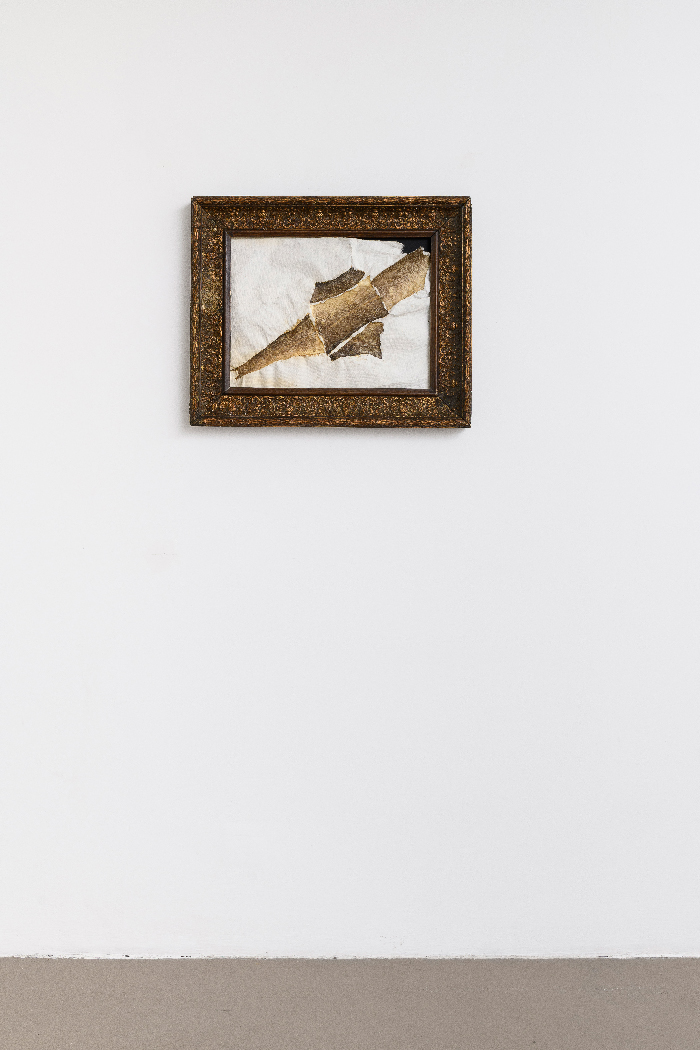
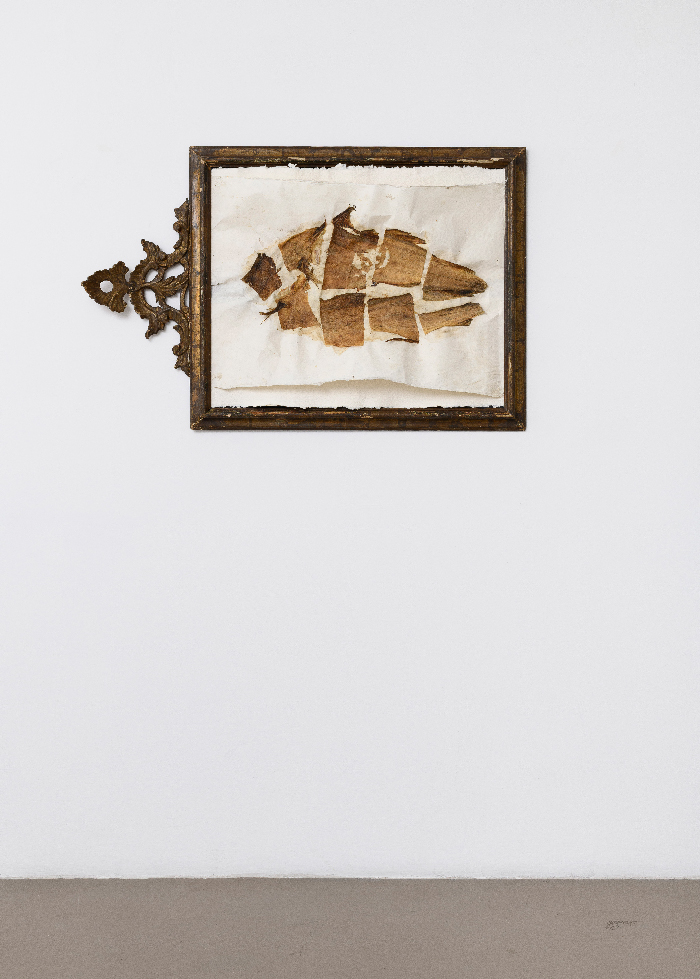
Continuing visiting the show backwards, we encounter a small number of medium and large-sized wood sculptures. In the last corner of the show, Kraken, a relief-work installed like an orthodox icon, built up with components from various wooden objects and a piano keyboard. These parts are almost no longer recognizable, and appear to have no relevance per se. Instead what we see is a net of small pieces of wood, that constitute a sort of facade of an inside cave space. The main structure is built with pieces from the piano, but some parts are substituted, when needed, with wood of other origins. It’s unsettling. Looks like a mouth. The position where it is installed increases the sense of repulsion, and at the same time suggests a sense of reverence.
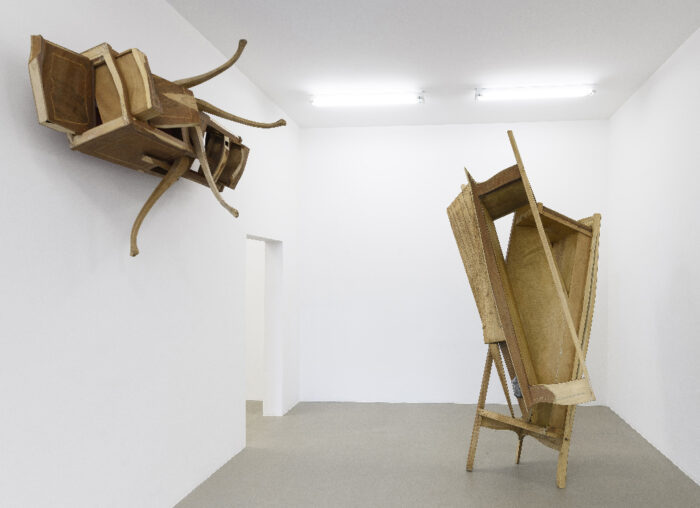
La Novena alla Puerta de Los Leones, is made into a skewed triangular structure. A wooden stair—probably from some mid-century workshop—is left untouched as she lays on the top of some other furniture parts. Then another surface on the top, takes the shape of a wing or a sail.
But, it comes naturally to ask a non-spanish viewer: “Who’s The Novena?” Peris gives titles to his works that often play with the tradition of titling after allegorical subjects—and seem to help us understand what we’re seeing. On the contrary, they complicate and mislead. The network of references they evoke is confused, collaged, and only temporary. Peris’s titles seem to play with the tradition of figuration, but no. These are collaged suggestions, almost automatic. It’s like hearing a voice in your head, it could be a whisper, or maybe a dreamlike story, or even a passionate discussion. Also, often in previous shows, a character would have been repeatedly mentioned in his titles, a recurrent subject of some strange event, improbable voyage, or responsible for some reckless act. Peris has named this character “Dark Man”.
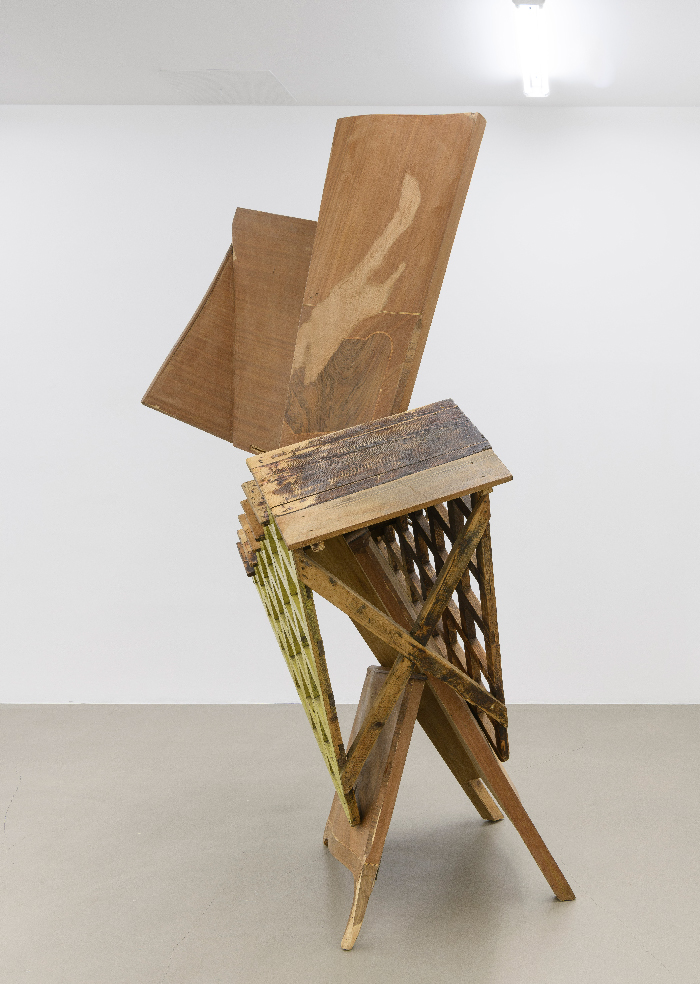
Artists have traditionally played with the idea of the alter Ego, and Peris, in his recent production, has integrated his one, as a representation of mental illness. Dark Man is the artist’s alter ego voice that speaks lies and gives us fake clues only to confuse us. It may represent the anarchic desire to fight the inherent power of words and breaking meaning into pieces like Peris can do with objects.
The following piece is named Sinfonia nr.5, and is another moment of rapture. With this piece, an intense sculptural activity is performed to transform familiar and vernacular wooden furniture, coming from early ‘900s industrial production, into a wood assemblage. This activity, though, doesn’t seem much like a cubist operation, rather it’s like Peris is just cutting a trunk, or a wooden board. Perspective is also used, placing surfaces against the viewer, and so accelerating space. Because of this architectural quality, when looking at this artwork, it’s almost as if you are contemplating a ruin: one can only imagine what the original object was, and testimony the process in which time reverses culture into nature. Differently from a slow natural process, these pieces show how man’s activity can be fast in destroying what has also been quickly constructed.
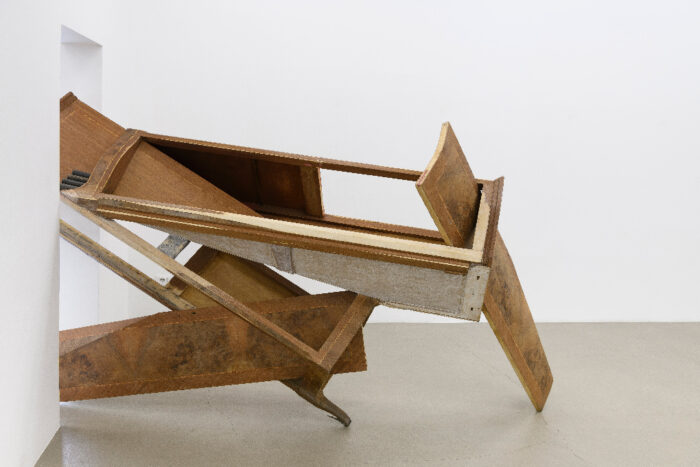
In the main room, Notturna is predominantly made of early industrial furniture too. Again, the use of furniture is an excuse, and specious. Peris takes the familiar and the recognizable and reverses it to the unfamiliar and the unrecognizable. It’s a pretext for creating a compositional aggression, and channeling a sense of tension, and inevitability. The same can be said for Rapsodia, that follows the same constructive and compositional logic, in another relief-piece. Cavity and chiaroscuro are intentionally pushed with the material into a grotesque form, protruding, almost reaching out to the viewer. Because of these formal qualities, and the reference to music instruments, these pieces remind me of the painting Amor Vincit Omnia, (1602-1603) from roman painter Michelangelo Merisi, that can be seen today at Gemäldegalerie in Berlin, where a dark winged angel stand against a mess of music instruments in the background.
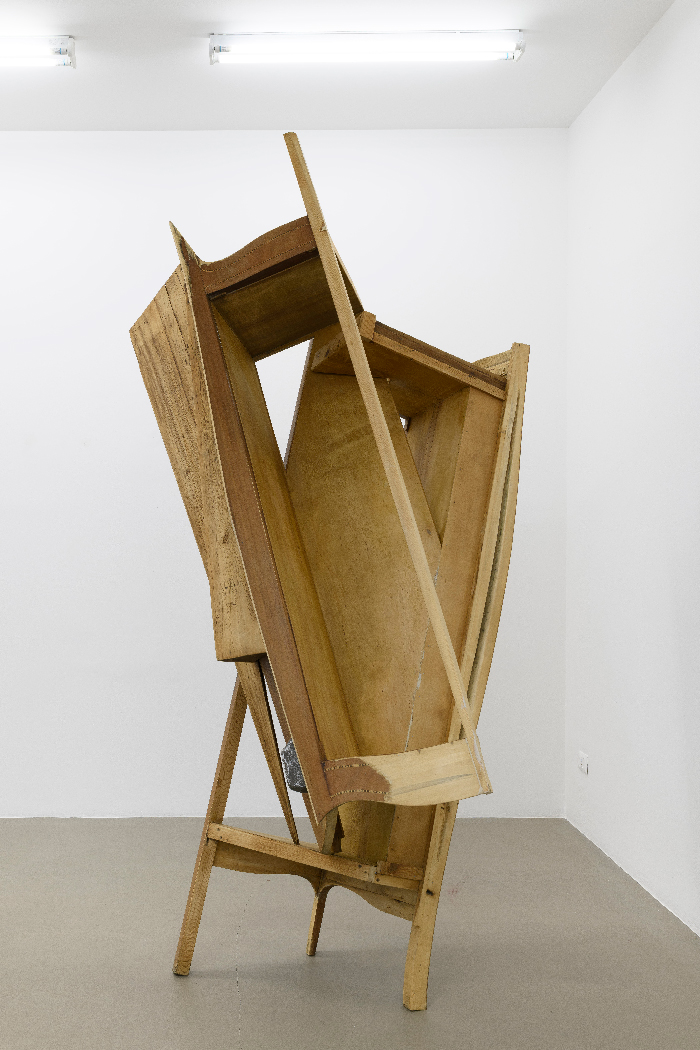
Finally, Strumento Innominabile concludes our reverse tour, in a position that is instead the opening of the show. It’s big, heavy, and generously complex. Again we recognize pieces of a piano keyboard, but this piece is made with many other wooden elements with different origins. Some industrial, some artisanal, few natural, doesn’t matter. For Peris it is the transformation that matters, and the final effect. Peris is creating another relief-piece, but like for the others, his activity cannot bear the limitation imposed by the flat surface of the wall, and so it reaches out to the floor and to the viewer. Again its triangular forms extend again off the surface they should stick to.
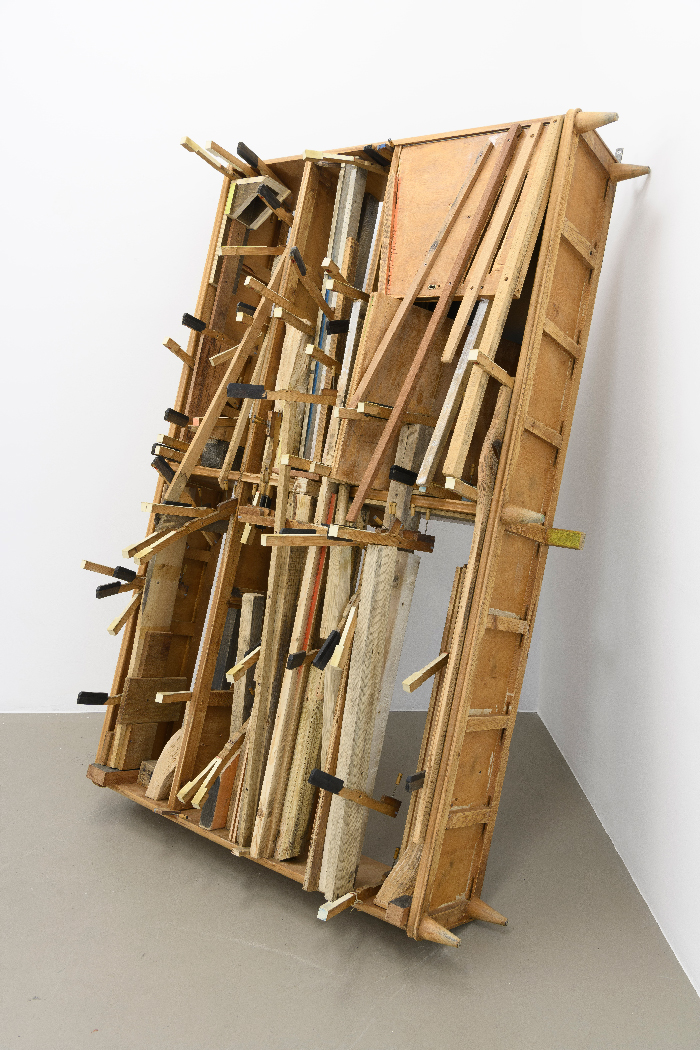
The show is strange, challenging even if set in a small gallery space. Mostly disproportionate. Ugly, wild, overflowing. Also delicate, from certain perspectives and surely romantic in its awkward attempt to be classic. The palette is brown, ocra, with some little details of colors, lines that the artist traces to indicate where to cut. The matter is profound but not rough. The composition is chaotic, and the effect frightening. These elements, together with the frequent—and complacent—suggestion of the presence of L’Innominabile or Dark Man, reminds me of another artist I’m sure is an important influence for Peris’ work: the Spanish painter Francisco Goya. Goya is indeed famous for his figures of insanity, and scenes of violence and evil, and he’s an artist who lived in another transitional time: the end of the Baroque era and the beginning of the Modern times—and we could call that another apocalypse.



